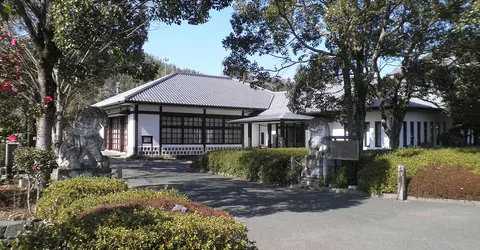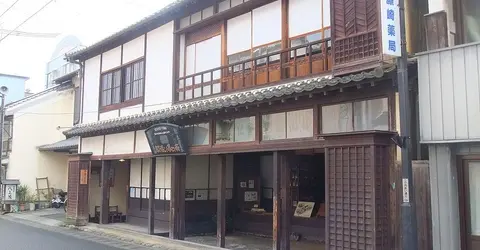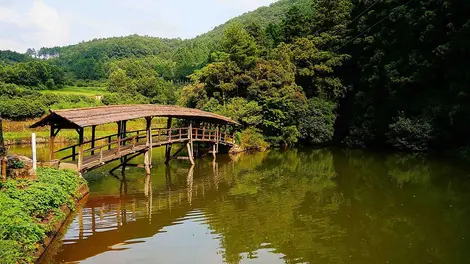Uchiko, Shikoku Town 内子町
- Published on : 05/10/2018
- by : C.L
- Youtube
Meiji era pearl
Traditional residences, vegetable wax production, kabuki theatre... The town of Uchiko, located on the island of Shikoku, has a very important industrial and artisanal heritage.
Known for its pilgrimage to the 88 temples and the wild Iya Valley , the island of Shikoku nevertheless conceals many marvels that are still unknown . Like the city of Uchiko, located in Ehime Prefecture. Nestled in the heart of a rural valley , Uchiko has a very well-preserved historic district , which will immerse travelers in the heart of the Meiji era (1868-1912).
A RICH HISTORIC QUARTER
90 remarkable buildings make up the historic district of the city, called Yokaichi, classified since 1982 as an “ Important preservation district for a set of historic buildings ”. It is here that visitors will be able to observe several characteristic elements of Meiji architecture : claustras in koshi wood and walls with hexagonal patterns called namako . Most of the residences are still inhabited today, it is mainly from the outside that they will have to be admired, even if some are open to the public, such as the Honhaga residence, belonging to the largest family of merchants in 'Uchiko, whose facade dates from 1889 , or the Omura Residence, which is one of the oldest buildings in the city, built during the Kansei era (1789-1801).

Kite Museum
At-by-at
A KABUKI THEATER
The town is also known for its wooden Uchiko-za theatre , built in 1916 to host Kabuki theater performances , and Bunraku puppet shows.
However, the building was nearly demolished due to the drop in performances. It is thanks to the mobilization of the inhabitants and associations that the theater reopened its doors, after renovation, in 1985. It is now one of the twenty traditional theaters of the archipelago and still offers theatrical performances.
It is thus possible to visit this 650-seat theater . In addition to discovering the stage and its constituent elements, it is also possible to access the backstage located in the basement, where one can observe the various mechanisms that make it possible to rotate the stage.
VEGETABLE WAX, STAR OF UCHIKO
In the 19th century, it was for its production of vegetable wax that the city of Uchiko was known throughout Japan and even beyond the archipelago. Vegetable wax, produced in the city, was mainly used in the manufacture of candles but also for the manufacture of cosmetics for luxury brands.
It is possible to visit the residence and the wax-making workshop , belonging to the Kamihage family of merchants. Thus, you will be able to discover the city, whose rooms are distributed around a Japanese garden in which grows sumac trees, whose seeds are used in the process of manufacturing the famous wax.

wax museum
Ippukucho
23 DEALERS FOR 30% OF NATIONAL PRODUCTION
Each of the rooms has been perfectly preserved and furnished with period furniture . What a real leap in time! The visit then continues at the bottom of the garden where there is a museum dedicated to Japanese wax . During the heyday, the city had 23 wax merchants who alone produced 30% of national production.
We also learn, thanks to the many information translated into English , that there are two types of wax. Raw wax called kiro , which is used for candles and which has the particularity of not emitting black smoke, and of not dripping. And the white wax, called hakuro , which is used for the manufacture of cosmetics. A building, located in the building, is dedicated to the various stages of the manufacture of wax, enough to become unbeatable!
As you will have understood, the city of Uchiko is very rich, with both cultural and industrial heritage . We therefore advise you to take the time to visit it if you plan to explore Shikoku during your stay. One last positive point: there are tourist maps of the city translated into French , which can be obtained when arriving at the station.
Address, timetable & access
Address
Timetable
From Matsuyama, take the JR Yosan Line and stop at Uchiko Station. 25 minutes by express train. 55 minutes by local train. From the station, walk 10 minutes to arrive in the historic district.





















